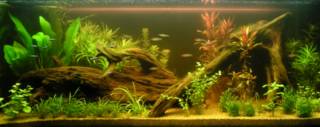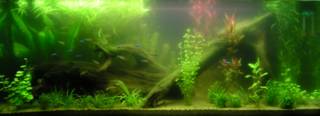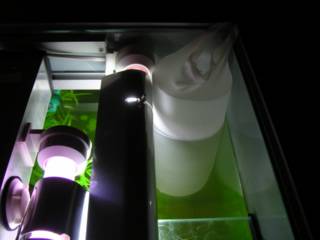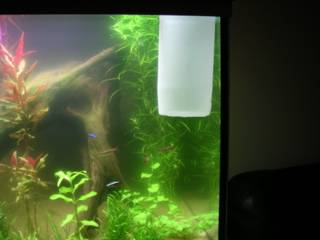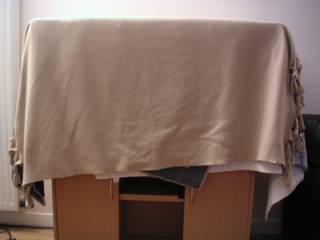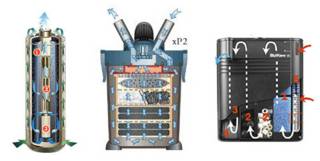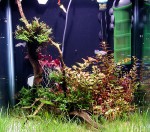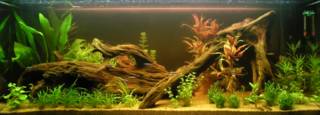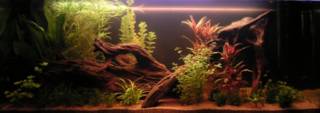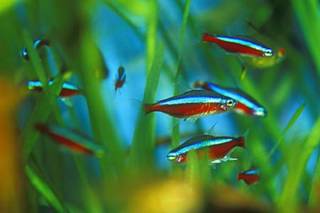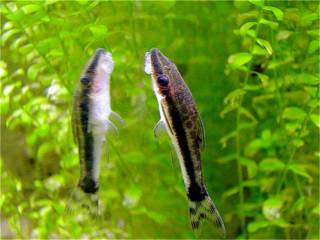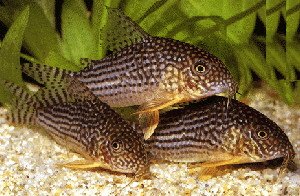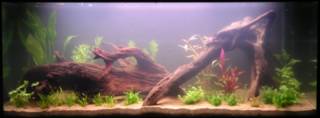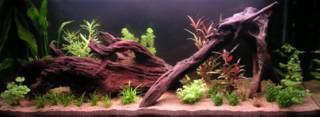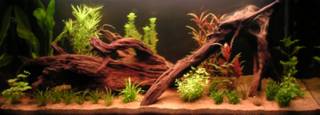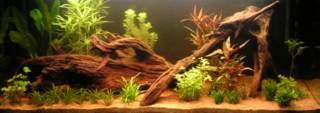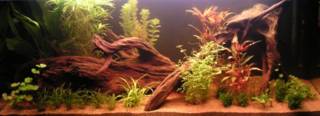Setting up the cycle of Nitrogen: the peak of nitrite The nitrogen cycle is extremely important (see section
). In aquariums, it allows the degradation of organic waste into ammonia / ammonium and nitrite and finally nitrate. When the cycle is balanced, the rate of intermediate compounds (ammonia / ammonium and nitrite) remain very low, which is fortunate because they are toxic.
But when starting a tank, the cycle must be set up. Indeed, it depends principally on bacteria that must first develop. This installation will result in particular
peak nitrite .
Implementation of the nitrogen cycle Initially, in the tray, there is water, sand, scenery and possibly some of the plants. There are always bacteria that come in, with things introduced or even by air, but in very low numbers.
From a few organic waste that can exist in the tank, bacteria and fungi responsible for ammonification will develop and transform this waste into ammonium / ammonia. These compounds will accumulate, which will result in increased levels of ammonia / ammonium. These
ammonia / ammonium will allow bacteria
Nitrosomas (or
Nitrosomonas ) responsible for the nitrosation, grow and transform into nitrites, which will in turn build up, while concentrations of ammonia / ammonium go down, ending at the peak of ammonia / ammonium, because
Nitrosomas will transform them now as they emerge.
These nitrites will in turn allow the bacteria Nitrobacter
responsible for the nitration, grow and transform them into nitrates, which will accumulate, whereas nitrites will go down: it is the descent of the peak nitrite because
Nitrobacter will transform them now as they emerge.
So the end of the nitrite peak, characterized by a return to zero nitrite concentration, reflecting the end of the introduction of the nitrogen cycle : All the necessary bacteria are now present in sufficient numbers, and instantly transform toxic compounds before they become dangerous rate.
is why we look at both peak of nitrite.
This implementation takes time, because unlike many bacteria, those of the nitrogen cycle are growing rather slowly (everything is relative: even when their population doubles in a few hours).
Basically, the peak of ammonia / ammonium appears after one week, the nitrite peak between 2 and 3 weeks and lasts several days.
So do not introducing fish before 3 to 4 weeks in the tray, or by the end of the peak of nitrite if you can see by regularly measuring the rate of NO2 with a commercial test.
Foster startup cycle As we have seen, the cycle begins with the transformation of organic waste, which will constitute the "food" of the first bacteria. A tray contains not necessarily start, which will retard the growth of bacteria.
It is therefore advisable to bring some "pollution" at the start: you can enter the famous pan cooked (or raw for that matter), a piece of meat, or just a few flakes of fish food.
However, the historical method which was supposed to introduce some fish resistant from the start to "pollute" the tank, even at the sacrifice with the peak of nitrite, is now discouraged by any self-respecting hobbyist.
Bacteria will also grow faster at elevated temperatures (the optimum being 35 ° for
Nitrosomas and 28 ° for
Nitrobacter ): 25 to 28 ° in the tray will therefore.
processes implemented by these bacteria are also very greedy of oxygen, so we must oxygenate the water better.
Avoid disturbing the start of the cycle Some actions can potentially disrupt the start of the nitrogen cycle by destroying the fledgling colonies of bacteria.
For example, it is strongly recommended to do water changes during the first 6 weeks. Already, their usefulness is almost nil. In addition, removing water, they will decrease the bacteria in the tank, although it is not in the water they are most present. Finally, adding new water unprepared can lead to the introduction of chlorine that will kill bacteria.
But it is even more important that you minimize the filter because it is within the filter media that bacteria will grow in large numbers. We must therefore avoid removing or destroying them by handling hazardous.
How not wait 3 weeks? Wait three weeks seem long to some (particularly for sellers!) And there are ways to go faster.
The method is to import natural bacteria in from another bin, recovering a portion of filter media or soil, which are both places where bacteria are most numerous (and not in water).
Another method is to buy products. These are of two kinds: bacteria and activators of the bacteria themselves. It is not always easy to know the exact nature and composition of cases produced. Activators will mainly support the development of bacteria, thus shortening the development cycle. The introduction of bacteria is supposed to help get all the bacteria needed immediately. But the weak point is the conservation of these bacteria, either lyophilized or bulb: the bacteria are fragile and they may in fact be all dead.
The problem with the introduction of bacteria is that you do not know if it works. Indeed, if the introduction is working, there is no nitrite peak. If it does not work, there is no peak not before 2 to 3 weeks.
Therefore, unless there
emergency justified, it is recommended to wait 3-4 weeks anyway . This will avoid many surprises.
Some details for those who want to go further ... Another method to accelerate the initiation cycle is the introduction of ammonia or ammonium in the tank to jump to the second stage. More risks than benefits in my opinion.
Ammonia inhibits Nitrobacter
: as long as there are ammonia concentration greater than 0.1 mg / l, nitrites will not be transformed into nitrate. Ammonia is present mainly in basic medium, and ammonium in an acid medium, according to equilibrium: NH4 + NH3 <-> + H +. When starting the cycle will delay even more the actuating
Nitrobacter and thus increase the duration and magnitude of the nitrite peak. But as soon as
Nitrosomas be numerous enough to reduce the ammonia concentration to zero,
Nitrobacter begin work immediately.
